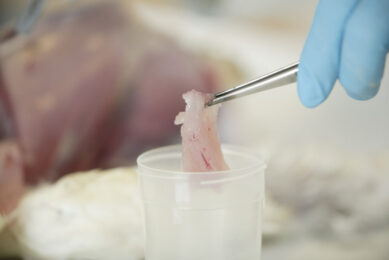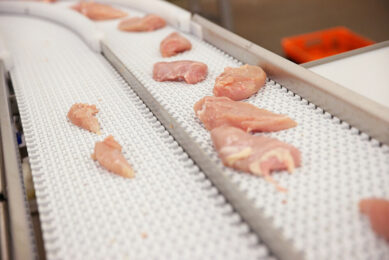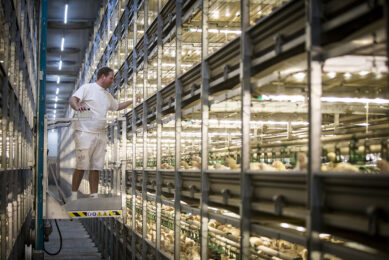Different prospects for poultry markets in CIS countries

The Commonwealth of Independent States (CIS) is considerably restructuring its poultry business. By far the biggest market of course is Russia, which is steadily moving towards self sufficiency. Some other countries however, are struggling to keep pace between demand and supply. A brief overview about the current facts.
By Vladislav Vorotnikov, Moscow, Russia
The image of the CIS poultry market changed significantly in 2009-2010. On the one hand many negative factors constraining the development of the industry in a number of countries diminished. Despite that, the positive trend of increasing production in the market gave place to a negative trend and decline in the production of poultry meat. In general, apart from Russia, the CIS output volume of poultry meat in 2010 increased 1% compared with rates of 2009 (in 2009 an increase of 2%), but in some particular countries the figures are not so promising.
Russian poultry production has been the most successful part of the domestic livestock industry for several years. According to the new study: “The market of poultry meat, preliminary results of 2010” by the company Intesco Research Group – the Russian market over the past three years has demonstrated dynamic development with an average annual growth rate of about 9-10%. The volume of the Russian poultry meat market in 2009 reached 3.74 million tonnes in carcass weight and increased by 32.4% compared with 2006. The demand for domestic poultry meat in Russia between 2009-2010 has grown rapidly. For domestic consumers the more important driver of demand nowadays is not price, but quality and safety of poultry meat and its products. According to the Intesco study, this year the market volume will increase by 10.1%. In the next year in Russia, consumption of poultry meat will reach 45-50% of the total meat market.
According to the Ministry of Agriculture of Azerbaijan, only 5-10% of domestically consumed poultry meat and eggs are currently imported from abroad, with Turkey and Iran being the primary importers. According to Azerbaijan’s Statistic Agency for the period from January to November 2010 agriculture in the country was developed significantly and sustained. Thus, for 11 months the country produced 303.2 thousand tonnes of meat of livestock and poultry, 1400 thousand tonnes of milk, and 1081.8 million hen eggs. During January-November 2010 poultry meat production rose by 8.7% and eggs by 0.1%.
In Armenia indicators of the poultry meat industry for the period 2009-2010 were simply disastrous, according to official data. Due to a lack of processing facilities, farmers sell livestock to middlemen, who in turn sell the birds in Iran, where prices are higher. Thus the stock of poultry, according to approximate data for the past 12 months, has fallen by more than threefold. As a result, Armenia’s poultry imports currently stands at 84.9% of all poultry meat consumed in the country. Therefore a traditional agricultural sector of Armenia is currently on the verge of collapse and the situation was worsened by the drought in the summer of 2010. Exact figures concerning the volume of poultry meat produced in Armenia today are not available.
In Belarus, poultry farming is traditionally one of the most developed industries. Indicators per capita are about 15 kg of poultry and 320 hen eggs. The country has 30.7 million heads of poultry, of which only 24% refer to the private sector. Agricultural companies are producing 97% of poultry meat and over 65% of eggs. Breeding stock are exported to many countries of the CIS. In the near future Belarus plans to further increase poultry production. In accordance with the Development of Poultry Farming in 2006-2010 Strategy, an increase in poultry meat production in 2010 should reach 250 thousand tonnes and eggs up to 2.3 million units. At present, we can say that these figures have been achieved. In comparison to 2009 the volume of poultry meat production in the country increased by 19%, eggs by 12%.
In Kazakhstan, the demand for poultry meat is met by almost 70% through imports. For the last six years the volume of poultry import in Kazakhstan has increased seven-fold. The growth of consumer demand in the country faced with a huge deficit of poultry meat and eggs gave rise to increased imports. In 2000 the republic imported 20 thousand tonnes of poultry meat, in 2005, 110 thousand tonnes, in 2008 about 132 thousand tonnes, and in 2010 poultry imports reached 142 thousand tonnes. At the same time the country produced just less than 40 tonnes of poultry annually, a figure which according to official data are at a stage of stagnation.
The poultry meat market in Kyrgyzstan is opaque, this is a market that is virtually unregulated and is not consolidated – for instance, in the country’s State Anti-monopoly Regulation Agency. Also it has been said that its impossible to assess the actual volumes of produced and consumed poultry. At the same time according to State Custom Service data, exports of meat in 2010 had a tendency for rapid growth. Thus, in the first nine months of 2010 the volume of meat exports, compared to the same period of 2009 increased 24-fold (from 30.7 to 736.4 tonnes) while imports of poultry meat increased by 18 times.
Poultry farms in Moldova made about 54,200 tonnes of poultry meat in 2010, 16% more than in 2009. Director General of the State Enterprise Avicola Moldova, Ion Byzgu explained this increase with growing investments in the poultry industry and improving conditions for poultry production, adding that prices had not risen since 2009. Byzgu notes that at the present time Moldova has not exported poultry meat as its production is more expensive than abroad. Moldova annually grows 15-16 million head of poultry. In Moldova, there are currently more than 30 enterprises involved in the production of poultry meat.
In Tajikistan, domestic production of eggs and chicken meat significantly increased in 2009-2010, almost completely replacing the necessity to ship these products from other countries. According to official data, the volume of egg imports in Tajikistan declined by 50%. In 2010, the country produced more than 14.3 million eggs. In addition, in September of 2010, another company in the Faizabad district began production of chicken meat. This venture will bring the amount of chicken meat production to 12 thousand tonnes per year. According to the Ministry of Agriculture of the Republic of Tatarstan, in 2011 the production of eggs is expected to reach 275 million units.
Turkmenistan is the last former Soviet republic, which declared that in the near future its poultry industry would be able to satisfy domestic demand. The government plans to continue large investments in the sector. In November 2009, the construction of the latest poultry complex in Gush Toplymem was completed, with a capacity of 3000 tonnes of poultry meat annually. Total investments are planned to reach 56 million USD. By October 1, 2009 the number of layers in Turkmenistan was 15.9 million head, which is significantly greater compared to the same date in the previous year. On November 2010, this figure had already reached the mark of 16.3 million heads.
| Kazakhstan is importing most of its demand for both poultry meat and eggs. |
The Government of Uzbekistan plans to increase the number of layers by 30% by 2016. The total number of birds in Uzbekistan currently stands at just over 33 million head. According to the market forecast by the end of 2012, total poultry population will reach about 59 million head. A development program provides the establishment of 2-3 farms annually in each of the regions of the country. The total number of poultry on these farms will be depending on the needs of the region. The total volume of emissions credits for farms is about 40 billion soums ($ 24,200,000). The share of domestic poultry should increase annually by 5.6%; nowadays it is about 66.5%.
In 2009, poultry meat production in Ukraine increased by 13% in 2010 – another 10%. As stated in the official report of the Association of Poultry Farmers of the country, this result emerged thanks to a number of projects, which started about 3-4 years ago. For the past eight years, poultry production has increased 34-fold and the assortment has greatly expanded. In addition, Ukraine could reach first place in Europe for poultry production in one to two years – today the total volume is about one million tonnes. On the other hand consumption reached 22 kg per capita (in the EU – 24 kg). Development trends of poultry meat production along with a decline in the production of other meat lines can be associated with a number of reasons. In general, the organisation of poultry production is characterised by a high efficiency, as poultry and meat production are generally concentrated in one enterprise (or a group of companies).













